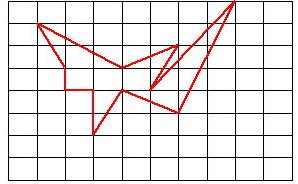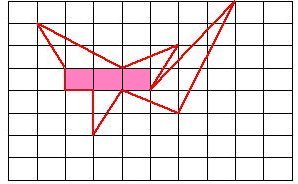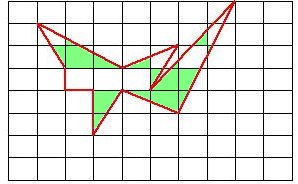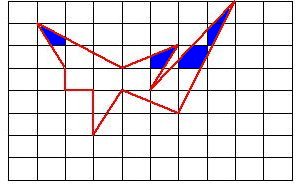since2002.10 since1999.12
since1999.12 yesterday
yesterday today
today
final renewal day 2006.1.17 To Japanese
Mathematics : a new theorem.
It answers easily 【 anyone 】 【 the area
of the lattice polygon 】.
-----The answer of the area of the bottom
figure is made of about 10-second (junior
high school student).-----

1, The name of the theorem.
Nukaga's theorem.
2, The discoverer of the theorem.
Hiroshi Nukaga
It is a school teacher with the Japanese.(The present: Hokota minami
Junior high school)
3, Working school of the time when a theorem
was discovered, and those days.
August, 1990
Ibaraki Prefecture Kashima town-run Kashima
junior high school working age.
(Incumbent : deer Kashima city Kashima
junior high school).
4, The proof person (three people ; 3ways)
of the theorem.
* Hiroshi Nukaga. discoverer said person.
: Inductive proof.
* Mr. Kiyoshige Nakaya (Nagano Prefecture
junior high school teacher) Geometrical proof.
* Mr.Yasuhisa Hirai (teacher of Okayama university) Algebra-like proof.
to Proof← please click on here
5, The formula of the theorem and the calculation
example which the answer of the area of the
lattice polygon of the upper figure is worked
out to.

Formula
S = m + n / 2
S : The area of the lattice polygon.
m: The number (the pink frame of the
bottom figure) of the perfect frame (square
frame).
n: The number (the green frame of the
bottom figure) of the frame (the frame that
it is surrounded in one imperfect side and
the lattice frame).The frame which is not
a square.
p: The frame (the blue frame of the bottom
figure) that it is surrounded in two sides
which are not in the line top of the lattice
frame, and the lattice frame.This frame is
not a square, either.
To the child student, "There are
two sides in the frame, and the frame coming
to find the area of that isn't counted."
When it said and a board document did a picture,
children to the third grade in the junior
high school from the fifth grade in the elementary
school understood it fully.
As much as it counts the number of frames
of "m" "n" and it substitutes
it for the above formula and it is calculated.
Attention : The frame of "p"
isn't counted.
In other words, the frame
of "p" is ignored at all.
This is the point of Nukaga's theorem.
6 The method (One lattice is made 1 unit
area.) that the area of the lattice polygon
answers it.

m: A perfect frame (a pink frame),
three. m = 3

n: An imperfect frame (a green frame),
16. n = 16

p: The frame (a blue frame) which isn't
counted, five. p = 5
S=m+n/2=3+16/2 =3+8=11 It becomes the
area which is and which is the same as the
lattice frame (square) for 11.
A lattice frame doesn't need to be a square.
A answer becomes 11c ㎡ if 1 lattice frame
is 1c ㎡.
7. Relation with other theorems.(It answers
easily 【 the area of the lattice polygon
】.)
There is worldwide famous "the theorem
of Pick".
The number of points of the lattice polygon
is counted, and it answers as for "Pick's
theorem" 【 the area 】.
The number of frames of the lattice polygon
is counted, and it answers as for "Nukaga's
theorem" 【 the area 】.
Therefore, as for the lattice polygon, it
decided to answer in these two methods 【
the area 】.
8. How to deal with it in the class.
*The introduction of "the theorem
of 3 square" of the third grade in the
junior high school.
*Subject solution learning.
I wrote this home page using Translation
software.

since1999.12
yesterday
today




